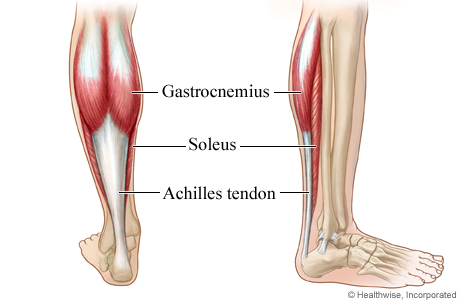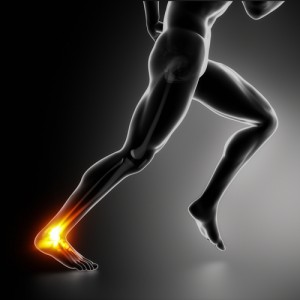Physio Health Advice > Achilles Tendinosis – What is it?
What Is It?
Achilles tendinosis is an overuse injury of the Achilles tendon, most commonly affecting runners between 30 to 40 years of age.
The term tendonitis is often used in place of tendinosis, however this is not strictly accurate as most terms that use ‘-itis’ describes an inflammatory condition and inflammation has been shown to be largely absent in tendon overuse injuries.
Tendinosis is instead due to repeated microtrauma as heavy, sudden or repetitive loads are applied. Tendon tissue typically has poor blood supply which means it is often unable to heal adequately before the trauma is applied again, resulting in a damaging cycle that eventually leads to the breakdown of collagen fibers. It is these fibers that provide a tendon with most of its strength and flexibility.
The end result is a degenerating tendon containing damaged and disorganized collagen fibers. As the tendon degenerates it is able to support increasingly smaller loads, adding to the cycle of damage and degeneration.
Tendinosis can be a difficult condition to treat and can take anywhere between six weeks to six months to resolve. Untreated tendinosis can even increase the risk of tears and complete rupture of the Achilles tendon. To aid in treatment, the condition is often classified as either acute or chronic depending on the duration of symptoms, and insertional or non-insertional depending on location.
What are the symptoms?
Pain, stiffness and weakness are the primary symptoms of tendinosis, with many people experiencing intense pain when they take their first steps out of bed in the morning. Many people notice swelling and thickening over the tendon, which may be tender to touch. More chronic conditions will give a ‘creaking/cracking’ sensation when the affected area is pressed.
Typically these symptoms will begin gradually with the onset of exercise or activity and fade as the exercise progresses. As the condition progresses the pain will become more constant, last longer and be triggered by lighter stress. It is important to note that tendinosis can be asymptomatic, only becoming painful when the condition is already quite advanced.
How can physio help?
Physiotherapy treatment for tendinosis is targeted towards breaking the cycle of injury and stimulating healthy collagen production. This means identifying factors what increase tendon stress, such as training errors, biomechanical faults and poor footwear, while prescribing appropriate rest from activity. There are many manual treatments which have been shown to be very effective along with a specific exercise program involving eccentric exercises. Ultrasound, extracorporeal shockwave therapy and dry needling are helpful treatments that may also be used.
For more information, don’t hesitate to ask your treating physiotherapist.
Click here to book an appointment.



